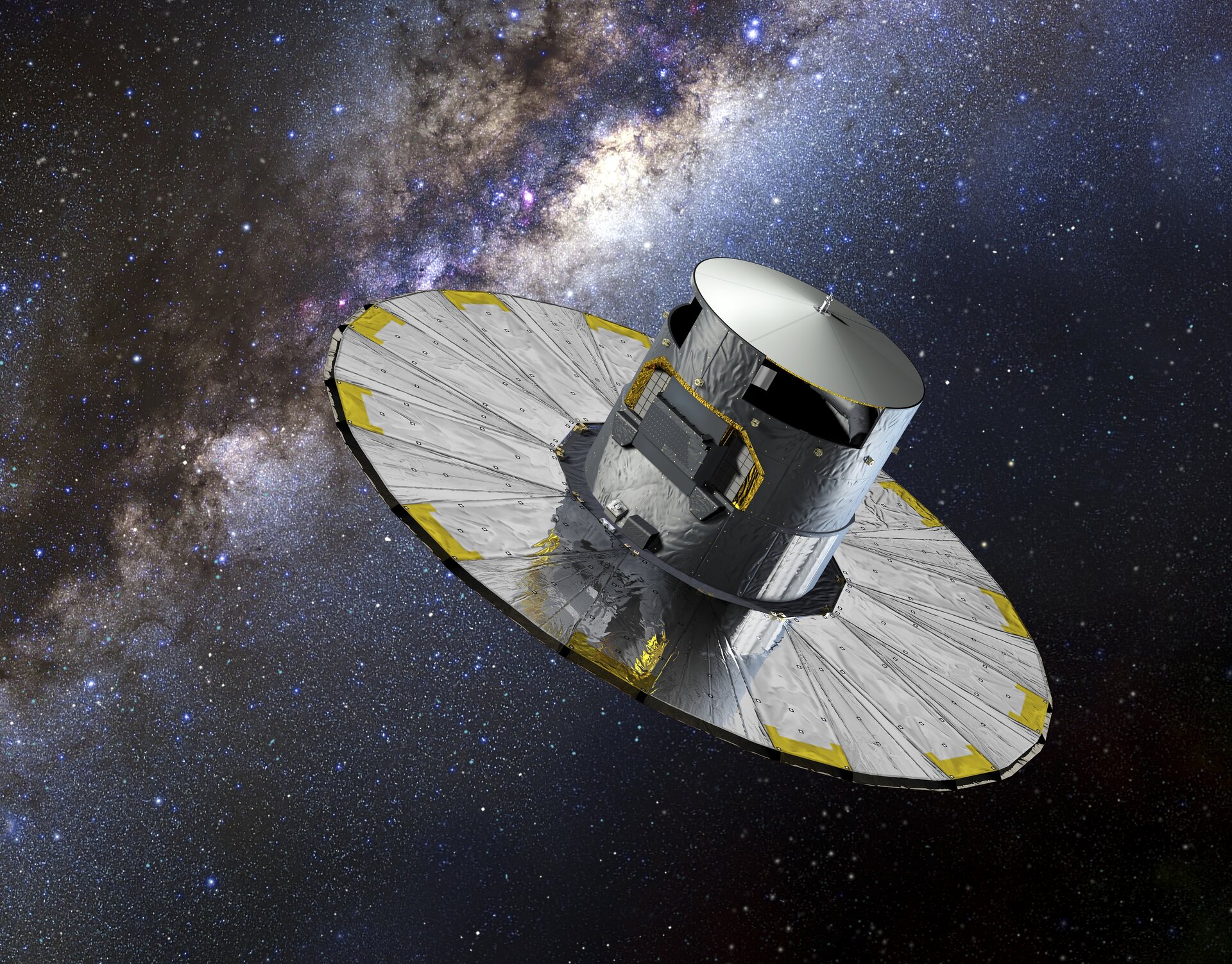NASA’s interstellar missions, such as Voyager and Pioneer, have been carrying messages from Earth into the cosmos for decades, transmitting radio signals into the vastness of space. These transmissions symbolize humanity’s effort to connect with potential intelligent civilizations beyond our planet.
Now, researchers from the University of California, Berkeley, and UCLA are analyzing these messages to predict where they might have been intercepted—and when we might expect a response. Using high-precision stellar mapping data from the Gaia space observatory, operated by the European Space Agency (ESA), the team identified specific regions in the cosmos where Earth’s signals could encounter extraterrestrial life. Launched in 2013, Gaia’s mission is to map billions of stars in our galaxy with unprecedented accuracy, providing crucial information about the position, motion, and characteristics of these celestial bodies.
The team’s findings, published in 2023, offer a more focused approach for SETI (Search for Extraterrestrial Intelligence) researchers, allowing them to concentrate their efforts on specific stars and planetary systems. In 1973, NASA sent its first interstellar radio signal via the Pioneer 10 spacecraft, which is heading toward the star Aldebaran, located approximately 65 light-years away, although it is still far from that star. Similarly, the Voyager 1 and Voyager 2 spacecraft, launched in 1977, transmitted signals as they journeyed beyond the Solar System.
Voyager 2, which exited the Sun’s heliosphere in 2018, is now in interstellar space. Along its trajectory, it passed near the direction of a brown dwarf located about 24 light-years away. By combining the trajectories of these spacecraft with Gaia’s precise data, researchers mapped potential areas in space where alien civilizations could intercept Earth’s signals.
According to The Debrief, if an intelligent life form near this brown dwarf intercepted Voyager 2’s signal, we could theoretically receive a response as early as the beginning of the 2030s. Thanks to the Gaia observatory, these calculations became possible, refining our understanding of where our messages might have reached and raising hopes for possible communication with other forms of life in the universe.

Launched by the European Space Agency (ESA) on December 19, 2013, the Gaia mission is one of the most ambitious projects ever undertaken in astronomy. Its primary goal is to create the most detailed three-dimensional map of the Milky Way, enabling scientists to study the position, motion, brightness, and other characteristics of over 1 billion stars. With unprecedented precision, Gaia is revolutionizing our understanding of the galaxy’s structure, formation, and evolution.
The Gaia satellite orbits the Sun at a distance of approximately 1.5 million kilometers from Earth, positioned at the Lagrange Point L2, opposite the Sun. From this stable vantage point, it can continuously observe the sky without interference from Earth, collecting highly precise data. Equipped with advanced instruments, including two telescopes and a high-resolution camera, Gaia accurately measures stellar parallax, which helps determine distances to stars as well as their proper motions.
In addition to mapping stars, Gaia also provides valuable data on extrasolar planets, asteroids, brown dwarfs, and distant galaxies. It measures not only the positions and motions of celestial bodies but also their chemical composition and temperatures, offering a comprehensive dataset for astronomers worldwide.
The precision of Gaia’s data is essential for missions like Voyager and Pioneer, as it enables researchers to pinpoint the regions in space where these probes have sent signals. By combining the trajectories of these spacecraft with Gaia’s data, scientists can map the areas where Earth’s interstellar messages might have been intercepted by extraterrestrial civilizations. This collaboration between past missions and modern data exemplifies how technological advancements can push the boundaries of our exploration and understanding of the universe.
Gaia has significantly contributed to diverse fields of astronomy, from studying dark matter to understanding the dynamics of star clusters. Originally planned to last five years, the mission has been extended several times due to the success of its data collection, with periodic updates (such as the Gaia DR3 catalog in 2022) that continue to transform our view of the cosmos.
Refining Predictions with Gaia Data
The Gaia space observatory, renowned for creating the most precise star maps in history, played a pivotal role in this research. Using Gaia’s data, scientists mapped the positions and movements of stars to calculate the time required for Earth’s radio signals to reach specific systems and for a potential response to return.
“Our estimates are based on the time it takes for signals traveling at the speed of light to move between stars,” explained lead researcher Howard Isaacson, an astronomer at UC Berkeley. “If an extraterrestrial civilization intercepted our signals and chose to respond, their reply would also travel at the speed of light, taking years to reach us.”
Additionally, the analysis highlighted specific star systems where SETI researchers can focus their telescope efforts, optimizing the chances of detecting potential alien signals.
Exploring the Probabilities of Contact
While the predictions are scientifically grounded, Isaacson acknowledged the low probability of receiving an alien signal. “The probability is low, but the potential impact of such a discovery would be enormous,” he stated. “Even if we don’t find signals right away, this research inspires new ideas and technologies to explore the cosmos.”
The study has also attracted the attention of UFO enthusiasts, some of whom speculate that significant extraterrestrial-related events could occur by 2027. However, Isaacson emphasized that his work is based on scientific data, distancing it from unverified or speculative claims.
This study represents more than just a search for alien life—it is a testament to humanity’s curiosity and determination to explore the unknown. With the aid of cutting-edge technology and high-precision measurements, the research opens new doors to understanding our place in the universe.
“Whether or not we discover extraterrestrial life soon, the effort to search inspires us to think big and imagine the possibilities,” concluded Isaacson.









